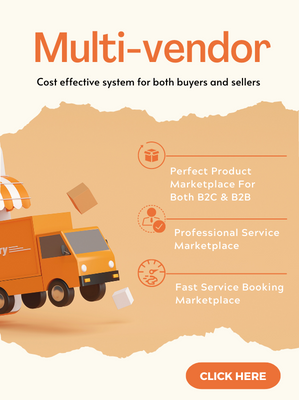Ecommerce downtime can cost your business a lot more than money. Opportunity, productivity, brand perception, and SEO damage are just a few examples of collateral your brand could suffer in the wake of an outage. With commerce moving steadily toward an almost entirely digital experience, a minute’s downtime is a minute too long.
The effect of downtime could be more severe, especially in the holiday season when maximum sales are expected to happen during a limited time. There are two possibilities of downtime – either the site is completely down with no accessibility or the site is impaired with performance issues. Either way, the damages are substantial because it is the cumulative loss in terms of money, customers, sales and business reputation. In this article, we would like to introduce some implications on e-commerce websites that downtime can cause.

1. Becomes the competitor’s advantage
Downtime is discouraging for online shoppers who impulsively visit e-commerce websites to purchase the products online. Their need to purchase instantly dominates over everything else. It has been reported that it takes an average of 3secs for a customer to decide whether they want to shop with you or not. When they notice downtime, most impulsive shoppers navigate to another competitor’s functioning website within seconds. Very few customers are very particular about buying the product from a specific company. That’s why you need to develop a stable, predictable, and well-supported hosting infrastructure at an early stage. If your competitor can do that better than you, the impact of monitoring their websites’ uptime will become an added advantage for them to stay ahead of the competition.
2. Loss in potential revenues & reputation damage
When customers face faulty or offline error messages, they less likely to return to the same website to continue their shopping in the future. It is even more frustrating for them if it has missing page components, shopping cart failures or performance issues. Unable to serve the customer needs will definitely make a bad impression about the website. Even loyal customers migrate to competitors when the website constantly has downtime issues. This permanent loss of both existing and prospective customers can lead to a huge reduction in online sales, loss in business revenues and damage to the company’s reputation.
3. Downtime impact on employee productivity
This is one of the main aspects that businesses typically overlook when they calculate downtime losses. While some online business owners think that short periods of downtime may not be as devastating, they are mistaken. When downtime requires some staff to dedicate time to resolve the issues, other employees from some departments hardly have any work due to downtime issues. There will be an imbalance in work productivity among various departments until the site comes back again and starts working normally. This becomes a huge burden for e-commerce companies. They not only have to incur losses in the form of reduced sales but also need to pay salaries & benefits to the employees even though they are not working.
4. Ruins online visibility
Downtime can have a serious negative impact on your search engine rankings. It can impact your search performance, preventing shoppers from getting to your website for a time even after the incident has been resolved. When the site is down often, it impacts negatively on ranking and there is a lesser chance of getting listed in the first few pages of Google search results. This means the e-commerce retailer has little opportunity to be clicked by the visitor and gets only a few online customer prospects vis-a-vis competitors. Being in a time-sensitive and highly competitive industry, you don’t want your website to be temporarily replaced with a site that is running especially if that site is a direct competitor.
So what can be done to protect your business against the potential cost and reputational damage of an outage?
Well, the good news is there are preemptive steps you can take to be better prepared and they are:
- How good is your hosting platform? Is it a good fit for your website in terms of expected traffic numbers (both now and in the future), do your service provider have the professional expertise to help you out even at short notice. A good hosting provider should have automatic updates and malware scanning for your business.
- What level of uptime can your hosting provider realistically deliver? Uptime is a measure of reliability. In other words, it’s the percentage of time your website is online. So you need to ask yourself is your host provider backed up by high-quality infrastructure, how confident are they when they talk about the technical controls they use to back this up.
As a rule of thumb, if you are experiencing and uptime of 99.90% or below, you should switch your web host. A good host provider should give you an uptime of at least 99.99%.
When compared to huge e-commerce companies, the impact of downtime on small online retailers is more because even a small number of lost customers could make their business nonviable. Every time their site goes down, the customer list gets negatively affected. However, no matter how good their intentions are in having their website continuously being available to the customers, they could not prevent site downtimes. But minimize that is possible. We – MageSolution provides a lot of themes and extensions that can optimize your website and reduce much of the downtime of your e-commerce website. For more information, you should check it out at: MageSolution



